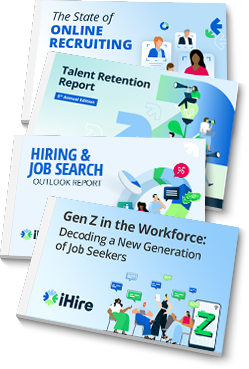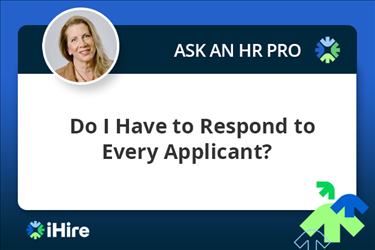- Employer Resources
- |
- Last Updated: May 19, 2021

Creating Your Ideal Candidate Persona
In a perfect world, your company’s job postings would attract top-tier candidates immediately, saving you time and resources in your recruitment efforts. But if you’re not finding your dream candidates, you may be skipping an important step in the recruiting process: creating your ideal candidate persona.
A candidate persona, also known as a detailed description of your ideal job seeker, can help you establish a comprehensive image of the person most suited to the role — and, in turn, help you find that person.
Candidate Persona: What It Is
Creating candidate personas tap into a well-known strategy long used by marketers to target potential customers. With a candidate persona, you’re using industry research, trends, and your own recruiting experience to zero-in on the ideal qualities of a successful candidate at your company.
A candidate persona typically includes the following details about your ideal job seeker:
- Work history
- Educational degrees and certifications/licenses
- Skills (both hard and soft skills)
- Personality traits
- Professional ambitions
- Preferred work environment
- Preferred methods of communication
When you create a clear picture of the candidate your company needs to fill your open role, it can help you craft the perfect job posting that reflects the type of candidate you’re seeking. You’ll also know just where to post the ad to find your ideal candidate. For example, perhaps a fresh-out-of-school Brand Strategist would spend more time on Facebook, while a veteran Software Engineer is more likely to hunt for jobs on a technology-specific job board.
Create Your Account Today

What Questions Should You Ask When Creating a Persona?
When you sit down to gather the info to create the candidate persona, focus on where this person came from — their previous jobs, educational background, skill set — as well as their possible career goals.
To help you build a candidate persona, ask the following questions:
- Does the candidate currently hold the same role that you’re hiring for?
- In which industry does the candidate work?
- What specific skills do they need to succeed in this role?
- Where does the candidate live? (If this is a remote job, the geographical location shouldn’t matter.)
- How much experience does the candidate have?
- What social media and job sites do they use?
- What is their communication style?
- What are their professional goals?
- What type of work environment will this person thrive in?
- What job benefits (such as salary, paid time off, or an on-site gym) motivate them the most?
Answering these questions can help guide every facet of your recruitment strategy — increasing the likelihood that you’ll find the right candidate sooner.
How to Create a Candidate Persona
Here’s how to create a job candidate persona that ensures you end up making the right hiring decisions.
1. Interview Your Team
Your best source of information is likely to be the managers who oversee the role you’re hiring for and your current employees in the same or similar positions. You’ll want to ask them about their own profiles — their interests, goals, pain points, paths to this job, communication styles, and more.
Be sure to ask managers which type of person seems to thrive best in the role and what work environment is most conducive to their success (for example — do they perform their best in an open-plan office or in a remote work setting?). For current employees, ask how they found this job, what appealed to them about it, and how they preferred to interact with recruiters during the job search process.
2. Use Industry Research and Reports
To help you further refine your job candidate persona, research the type of professionals you’re trying to reach. Look for industry-specific professional organizations, which might release survey results or write regular newsletters that could help you learn more about the people in the role. Social media can also be a handy tool, allowing you to browse people's profiles in similar roles and understand their career trajectory, professional memberships, activities, and interests. To round out your research with hard data, check out the Bureau of Labor Statistics, which offers a snapshot of occupational trends.
3. Narrow It Down
By now, you’ve gathered both anecdotal and statistical data, so it’s time to figure out what’s most relevant to your job candidate persona. Work with the recruiting team, and if possible, the manager and employees you interviewed, to decide which characteristics are most essential to the job.
Your job candidate persona doesn’t have to be anything fancy, but make sure you separate it into categories such as Professional Background, Personal Interests, Experience, Skills, Networking and Job Search Habits, Career Goals, etc. Ideally, focus on between five and 10 must-have characteristics. Your candidate persona should be simple to read and remember, so that as soon as a resume comes in that meets your qualifications, you’ll hop right on it.

4. Tailor the Job Description
Now comes the important part — tailoring the job description to reflect the candidate persona. Use your research to explain the skills and experience this role requires, as well as any qualities that would resonate with potential candidates. Describe the type of person you’re looking for, as in: “We’re looking for a creative, strategic thinker who’s ready to take the next step in brand marketing. If you have a passion for marketing and proven expertise across a variety of brands, we want to meet you.”
Using your research, highlight the aspects of the job that are most likely to appeal to the ideal candidate — whether that’s the salary range, a flexible work arrangement, tuition reimbursement, or professional development opportunities. Sprinkle the hiring ad with adjectives drawn from your candidate persona.
5. Use the Candidate Persona as a Constant Theme Throughout Your Recruitment Process
Keep your candidate persona in mind throughout the recruiting process. For example, if you know your ideal candidate is likely to be passionate about social change initiatives, posting a link to causes that your company supports could grab their attention.
Use the interview as a chance to ask questions inspired by your candidate persona research. For example, ask about the specific technical skills you deemed “must-haves” in your candidate persona and ask applicants how they have utilized those skills in previous positions.
The more thoughtful and detailed your job candidate persona is, the more useful it will be as a tool in your recruiting strategy. In turn, you can reduce the time you spend on hiring and improve your recruitment efforts in the long run.
RELATED RESOURCES
Hiring? You're in the Right Place.
- Reach unique talent: 51% of our candidates aren't using other job boards
- Connect your ATS and get 6x more applications with iHire's apply process
- Get matching candidate resumes sent straight to your inbox
We Value Your Privacy





